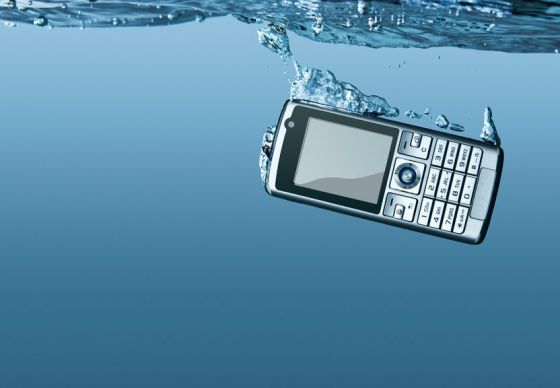Steps to resuscitate your phone after water damage

Our smartphones have become an incredibly important part of our daily lives, storing all our contacts, photos, online information and other important things on them. If you’re like me, you drop your phone a little more often than you’d like to admit, usually with no lasting damage, but dropping your phone in water is a different story. However, water damage does not always mean the end for your device. If you follow these steps from AndroidPIT, your smartphone may just have a chance of survival.
What to do if you’ve dropped your phone in water
- Turn it off
- Dry it
- Submerge in rice
- Leave it for around two days
- Monitor it and avoid overuse
Turn it off
The first thing you should always do if your phone takes water damage is to turn it off it hasn’t already turned itself off. Remove the phone from the case if you have one (and you should have one) and remove both the SIM and SD cards out of their respective slots, as well as the battery.
Dry it
Find a light cloth or towel and gently dab the phone dry, and take as much care as possible not to spread the water around anymore than you have to. If the water damage is more excessive, you can try using a vacuum to get the water out – but be careful!
Rice is your best friend
The next step is the most important part. Find a zip-lock bag big enough for your phone, and fill it with uncooked rice. Rice is very good at absorbing liquid, and can suck out any excess from the interior of the phone. This is actually a common method of phone drying, and should be done as soon as possible after taking water damage.
Let it be…
Leave your phone to dry for approximately two days, maybe more just to be safe. It may be tempting to take the phone out and turn it on during this process, but don’t. After two or more days have passed, take out your phone and put the battery back in, but not the SIM card. If it doesn’t turn on after this, the battery may be damaged, in which case a replacement can be used.
How can you insure your smartphone?
Shopping around for a home insurance policy?
Whether you're looking for home, contents or combined cover, you can easily compare from 100+ policies with Canstar. Button: Compare policiesMonitor (and don’t overuse it!)
If the phone starts to work again, ensure that you keep a careful eye on it over the next few days and also that you don’t overuse it. It is entirely possible that there will be some lasting damage done to the phone, such as the speakers or touch-screen not working properly. However, barring some extreme water damage, your phone should hopefully be back to normal if you follow these steps. Just make sure you don’t bring it near water next time!

What NOT to do if your phone gets wet
Before you begin to perform any of the steps above, it is recommended that you do not do any of the following, as they may disrupt the process or damage the phone further;
- Don’t attempt to turn the phone back on if it has turned itself off, and resist the urge to press any buttons. The exception to this rule is to press the power button to immediately turn it off if the phone hasn’t done so already.
- Resist the urge to start physically bashing your phone, no matter how frustrating technology can be!
- Also do not take the phone apart, with the exception being to remove the SIM and SD cards as mentioned earlier.
- Don’t blow on the phone, as this might move water into more internal parts of the phone.
- Don’t heat it up or cool it down.
It is important to remember that some water damage may be too severe to be recovered, and you may unfortunately have to get a new phone. First, it could be a good idea to check if your existing insurance policy (such as for home and contents or specifically for the phone) covers damage to your device.
Compare Contents Insurance With Canstar
For help deciding which new phone to pick, be sure to check out Canstar Blue’s smartphone comparison page for more information.



